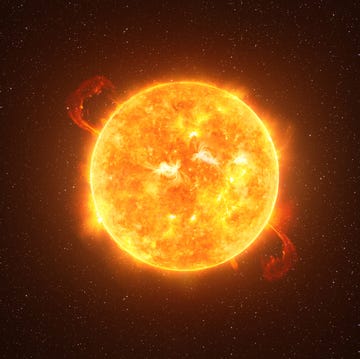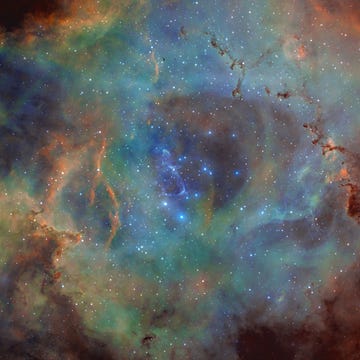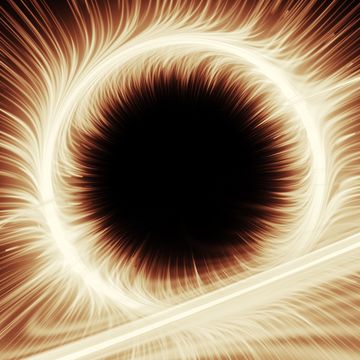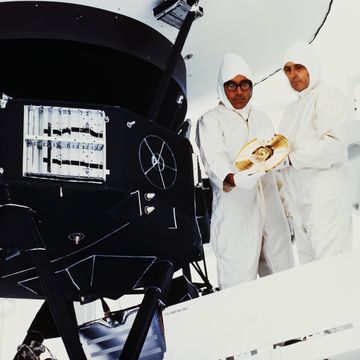Name: Bernal sphere; Stanford torus; O'Neill cylinder
Named For: Respectively, British scientist John Desmond Bernal, who proposed the idea in 1929; a summer study program held by NASA in 1975 at Stanford University; Princeton physicist Gerard K. O'Neill in a 1976 book on space colonization.
Selected Science Fiction Portrayals: Stanford torus–like space stations are depicted in the 1968 film 2001: A Space Odyssey and 2013's Elysium. A modified O'Neill cylinder served as the basis of the Babylon 5 space station in the 1990s TV series of the same name, and in Arthur C. Clarke's Rama novels.
The desire to live in new places has driven our species to settle Earth's harshest climes, from deserts to tundras. Someday, that same urge (or, less optimistically, devastation to our home world) might drive us to colonize the toughest environment of all: space.
Although they sound unfathomably futuristic, space stations housing many thousands of people are actually well within our technical and engineering know-how. Scientists have argued that permanent space outposts conceivably could be built for less than what the United States spends annually on its military.
Back in the 1970s, for example, NASA-funded researchers investigated the feasibility of multiple colony designs. And they had to do it for less than $35 billion (north of $200 billion in today's dollars). "Everything had to be based on what was available at the time," said Jerry Stone, leader of the British Interplanetary Society's Project SPACE (Study Project Advancing Colony Engineering), which is now updating the decades-old designs to take new materials such as carbon fiber into account, as well as modern robots and computing power.
That 1970s workshop yielded three distinct design concepts that are still widely referenced today: the Bernal sphere, the Stanford torus, and the O'Neill cylinder. So we'll use them as our guide to what it would take to build a thriving colony in space. All three designs essentially contain a living space rotated to induce gravity, with the key difference being the shape used.
The Bernal Sphere
A Bernal sphere exterior. (Photo Credit: National Space Society)
A Bernal sphere is essentially a globe about a third of a mile in diameter that rotates almost twice per minute to provide Earthlike gravity along its equator. (This feeling of artificial gravity would peter out near the poles.)
Around 10,000 people could populate the interior space, their buildings lining the curve and appearing overhead clear across the sphere's expanse.
A Bernal sphere interior. (Photo Credit: Rick Guidice/NASA)
The Stanford Torus
A Stanford torus, a donut-shaped tube 430 feet thick with a diameter spanning 1.1 miles, spins once per minute to produce its gravity. The inner portion of the tube is open, as in the movie Elysium, or enclosed by a transparent material to let in light.
The exterior of a Stanford torus. A mirror, situated above the torus, directs sunlight into the habitat ring. (Photo Credit: Don Davis/NASA)
The torus would shelter a similar number of colonists as the sphere. Horizons would slope away, upwards, and the ring of the inhabited landscape soaring overhead would make newcomers swoon. Six spokes connect the habitat ring to a central hub where spacecraft can dock. A mass estimate: 10 million tons.
The interior of a Stanford torus. (Photo Credit: Don Davis/NASA)
The O'Neill Cylinder
The third shape is the O'Neill cylinder, the main body of which is about 5 miles wide and 20 miles long. Three strips of land would stretch along the interior, with three equal-size, interspersed strips serving as giant, sealed windows.
The cylinder's huge size means a gentle spin of one revolution every minute and a half would be enough for terrestrial gravity. One problem, though, is that objects want to rotate about their long axes, so an active control system would be needed to maintain the desirable short-axis spin rate. O'Neill also envisioned that the cylinders would always come in counter-rotating pairs to offset destabilizing, gyroscopic effects that would cause the cylinders to stray from their intended, Sun-facing angles.
O'Neill cylinder interior. (Photo Credit: Rick Guidice/NASA)
While any of these space colonies would be far more vast than humanity's biggest space infrastructure project to date, the International Space Station, their designs would not pose insurmountable engineering challenges. "From an engineering standpoint, the structure is very easy—the engineering calculations are totally valid," says Anders Sandberg, a research fellow at Oxford University's Future of Humanity Institute, who has studied megastructure concepts.
Mining the Moon
The bigger issue is the logistics. Rocketing enough material into space to build a colony would cost big bucks. A better bet: establishing simple manufacturing facilities in space designed to use raw materials mined from the moon or asteroids.
The real cost-saver O'Neill envisioned would be installing a large electromagnetic catapult on the moon. Popular among hobbyists as coilguns, these devices use electromagnets to propel a magnetizable payload down a shaft. Thanks to the moon's weak gravity, only one-sixth of Earth's, throwing ample material into space would be a piece of cake.
"The nice thing about an electromagnetic launcher, once it's been constructed, the launch costs are pretty much zero," Stone says. "You don't have to provide fuel, just electricity, and you get that from the sun by solar energy."
The raw lunar or asteroidal ingredients could be fashioned molecule by molecule, thanks to 3D-printing technology, into most of the components needed for the colony. "We know from Apollo samples the composition of moon rocks and soil," Stone says. "There's lots of oxygen, which we need for breathing; lots of aluminum, which is needed for structural parts; there's silicon, for the windows; and magnesium and titanium and other useful stuff."
Other key structural items would include solar panels for energy, and mirrors to angle reflected sunlight into habitat enclosures through their windows. Robots could handle much of the construction itself, guided by humans or working autonomously. Soil and other Earth-specific items, such as wildlife, would, with some difficulty, need to be shipped aloft.
Colonies Built to Last
The completed colonies would reside in the Lagrangian point known as L5, an island of stability where gravitational attraction from our planet, the moon, and the sun balance out. Dedicated agricultural areas (located in additional tori outside the Bernal sphere, or in the O'Neill cylinder's end caps, with optimized environmental controls) would keep colonists well-fed with fresh food. Trade with other colonies and Earth would supply any unavailable wares.
To protect the colonies from meteorite impacts, leftover slag from manufacturing could be built up as padding on the colony's exterior. In general, the experts says, meteorites should be a manageable nuisance.
"A meteorite with enough kinetic velocity to break a window panel might happen every three years," Stone says, based on studies of the issue. The windows would be made of many small panels, so one getting smashed now and then, no problem—it would take centuries for the colony's air to leak out.
Shielding residents from harmful space radiation, though, is trickier. Cosmic rays from deep space could not reasonably be stopped if humans lived outside the protection of our planet's atmosphere. Space residents would have slightly elevated cancer risks, mitigable by frequent screenings, Stone says.
As for radiation from the sun, several inches of water shielding would block most of it. During rarely intense solar flares, colonists could take refuge in thickly shielded "storm shelters"—not unlike precautions for major weather events here on Earth.
One benefit: Space colonies would be immune to Earthly natural disasters. "In the colonies there would be no earthquakes, no hurricanes, no tsunamis, no volcanoes," Stone says. "Plus, you pretty much control the weather in an O'Neill cylinder. Because it's so big, you would have natural rain clouds forming in there."
That level of control—and the chance to thrive in the final frontier—should motivate humankind to leave our planetary home. As O'Neill wrote in Physics Today in 1974: "I believe we have now reached the point where we can, if we so choose, build new habitats far more comfortable, productive and attractive than is most of Earth."














